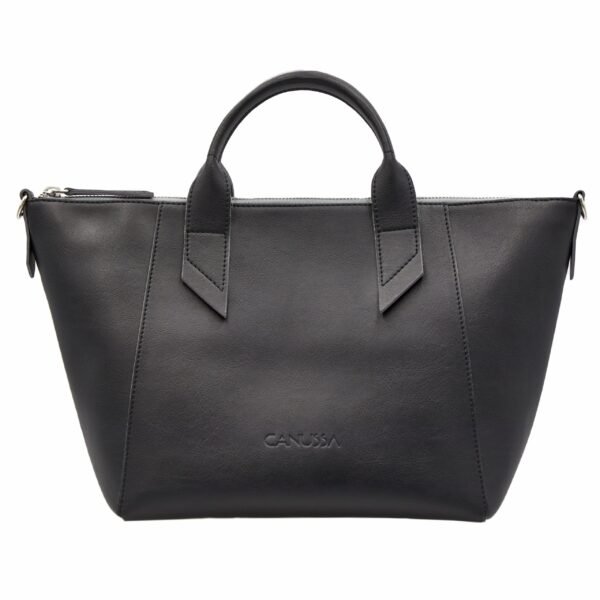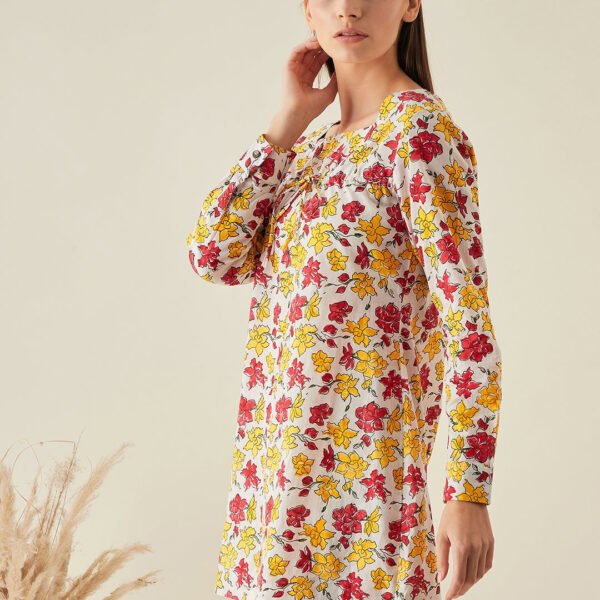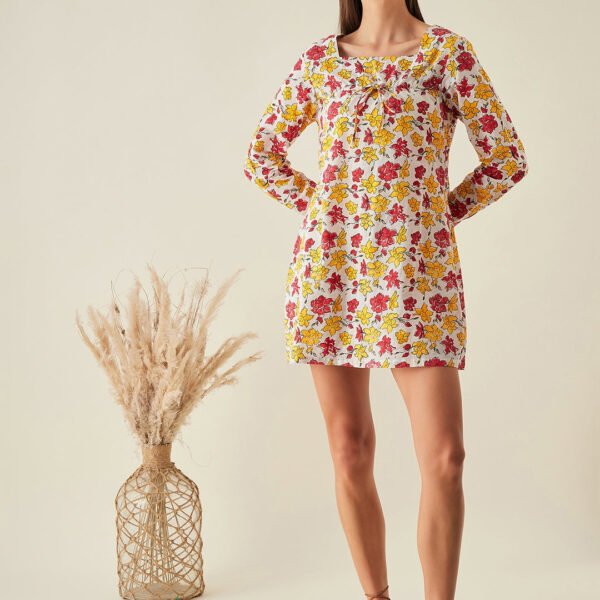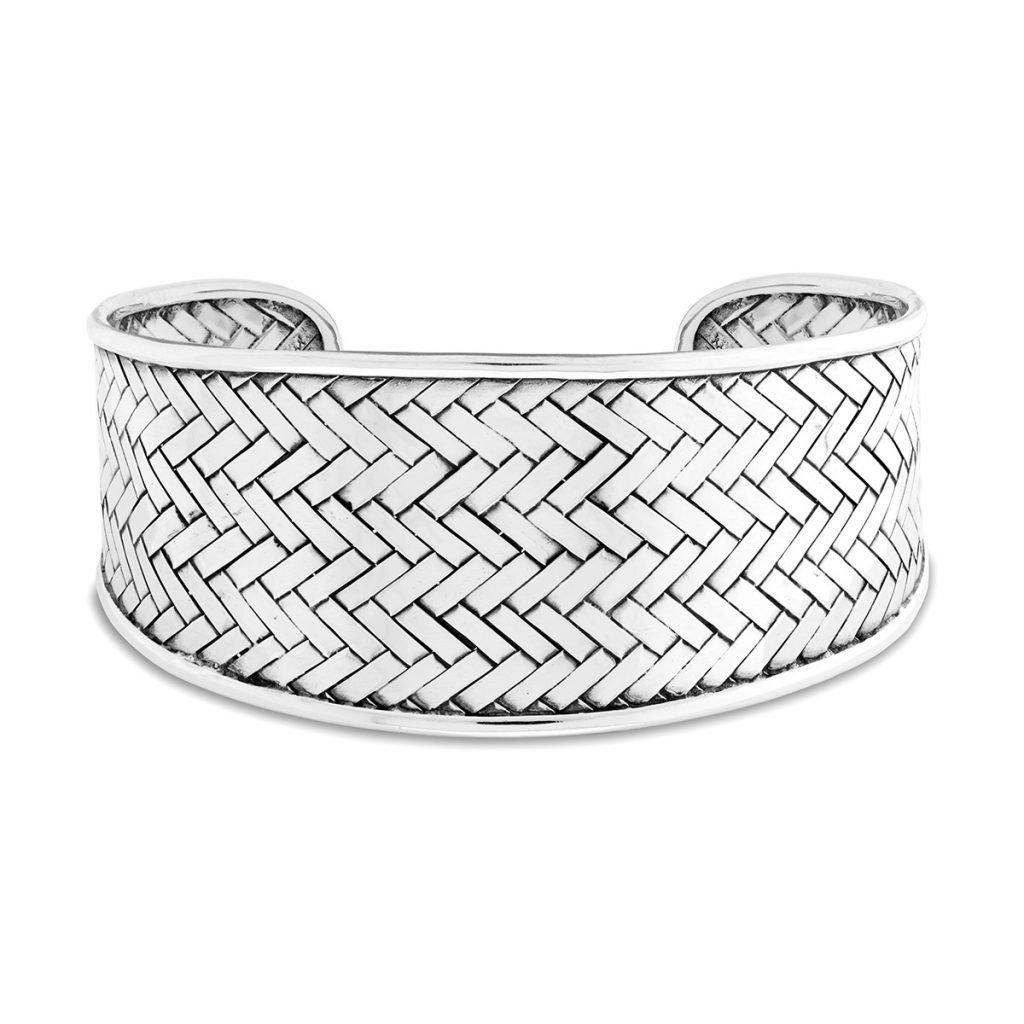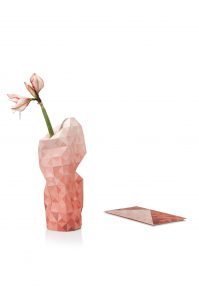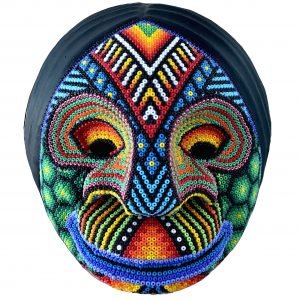Sustainability has become a major topic in the last couple of years especially when Covid-19 hit and we realized how connected we are all. Companies are realizing that people care more about the environment and are acting on the demands of their customers. The fashion industry is said to be the second most polluting industry in the world and is an accelerator of climate change. Today we want to share what is slow fashion and why it is so important. At the end of the day, it is one of our beloved 3S’s or core values.
What is Slow fashion?
Slow fashion is not really a new concept. Actually, fashion used to be always “slow” before. Slow fashion is having now a big comeback and we hope it stays this time as it has many benefits. Not only for the environment but also for the people behind the clothes. The ateliers or small factories are producing clothing in smaller batches and they are normally of high-quality materials and careful manufacture.
Easily explained, slow fashion is the exact opposite of fast fashion. Fast fashion is based on the fast production of big amounts of clothing, normally at very low prices. The items are normally of low quality. Some are so badly done that after you wash them twice are not good to be worn ever again. The materials are mostly cheap fabrics with some cheap (and harmful) chemicals as dyes. In addition, the garment workers tend to make low wages and work in an unsafe environment. In this industry, it is also sadly common that the workers are not even adults.
Why is Slow fashion important?
Consumerism is reaching heights that are dangerous. The Earth is not able to produce at the rate we are consuming. We are basically depleting the natural resources, and with it, changing our climate… but guess what happens if we finish up our planet’s resources… We are doomed. Fast fashion brands need to change their business model and slow down their production levels. Will they be able to rise to the occasion? Will we be able to stop the crazy consumption and start buying only what we need?
Too many questions, we wish we knew the answers. But in the meantime, there is a new kind of consumer. One that cares for the process, looks for quality and understands what is behind their purchase. One that prefers to know the price paid is being used to pay fair trade wages or quality fabric rather than marketing campaigns. A consumer that uses fashion to really express their individuality instead of going with the “uniform” all big fashion brands want her to buy. If that is you, welcome home.
Slow Fashion Versus Fast Fashion
Slow Fashion and Sustainability
One of the major differences between fast fashion and slow fashion is when it comes to the amount of waste generated. In economics, we learn the dance between offer and demand. Fast fashion brands create tons of clothes and with their big marketing budgets create the need in the society to keep on buying, whether we need it or not. A new print, a new silhouette, with sleeves, with shoulder pads… They have perfected the art of newness and we got addicted without noticing the consequences. But, do you ever think what happens to whatever is not sold?
Slow fashion brands, same as the rest of businesses dance the offer and demand dance, but the difference is that they create a design, produce a small batch, and see how the market reacts. Does it sell? Then, they do more. If it doesn’t sell, the waste is still minimum. It allows to really meet what the client wants in terms of design, fit, and also fabric as the batches are smaller and the iterations not so costly. As consumers, we get to enjoy better garments, unique designs, and the special connection as we know who is behind and what makes that piece so special.
Fair treatment
The social aspect of the industry is another of the biggest differences between the slow and fast fashion. Slow fashion workers are normally working in small ateliers and family factories. Having a personal relationship with the owners and designers made them team members. They tend to get paid a living wage and work in a safe and clean environment. They are being able to feed their kids and send them to school. A living wage allows workers to save up some money for their future and still be able to afford a good life while supporting other family members. The factory is paying for overtime, weekends, or holidays and they work regular hours. This is called ethical fashion, and it is a key aspect of the kind of fashion we strive to enjoy. So we also need to consider it when buying from a specific brand.
Shopping habits
Slow fashion invites us also to look at our shopping habits and question whether we truly need the item. Social media is influencing our purchases and many times we don’t need anything at all. It is all about purchasing one high-quality product rather than 5 low-quality items you will throw out or wear once. We call it investment pieces.
Do slow fashion items last longer?
Items from my grandmother and even my mother when she was young are still in pristine shape. I can not say the same from the items I bought some years ago out of fast fashion brands. Why? Have you ever heard of planned obsolescence? Before we used this term only for the mechanical, automotive, and technology sectors. Now, fashion is also part of that game. If stitching is not good, if the materials are not great, the piece will not stand the washing and wearing. And so, eventually will not be good to be worn. Now, you need to buy a new piece, and here we go again.
This is easy math, high quality = longer-lasting item. Slow fashion items are long-lasting so you can wear them as long as your heart desires. In the end, it is cheaper to purchase a more expensive item. It is a win-win for you and the environment.
-
Sale Product on sale
 Black Budapest Wide Fit Shirt
Black Budapest Wide Fit Shirt€109,19Original price was: €109,19.€76,16Current price is: €76,16.- GBP: £64.43
- SAR: 313.24﷼
- USD: 83.50$
- AED: 307.10AED
Out of Stock
-
Sale Product on sale
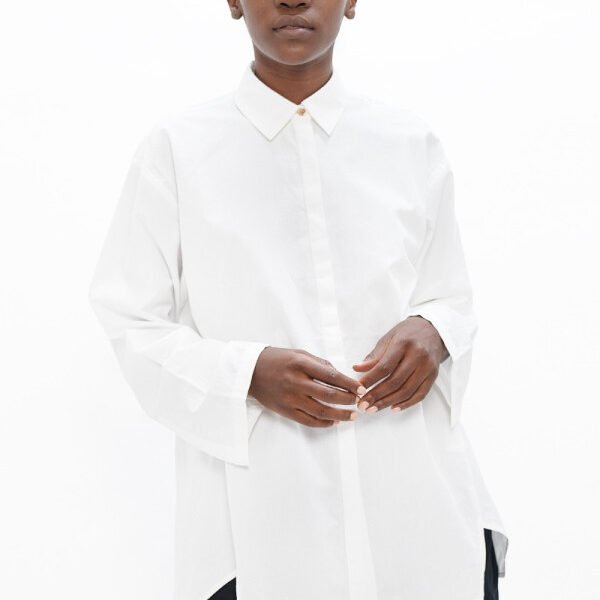 White Budapest Wide Fit Shirt
White Budapest Wide Fit Shirt€109,19Original price was: €109,19.€76,16Current price is: €76,16.- GBP: £64.43
- SAR: 313.24﷼
- USD: 83.50$
- AED: 307.10AED
Out of Stock
-
 Lenzing Shirley Shirt€104,16
Lenzing Shirley Shirt€104,16- GBP: £88.12
- SAR: 428.40﷼
- USD: 114.20$
- AED: 420.00AED
In Stock
-
 Fast Fashion is not free – Organic Cotton T-shirt€31,00
Fast Fashion is not free – Organic Cotton T-shirt€31,00- GBP: £26.23
- SAR: 127.50﷼
- USD: 33.99$
- AED: 125.00AED
In Stock
Slow Fashion and the crafts
The ultimate form of slow fashion is handmade, artisanal pieces. Pieces with embroideries, handpainted, unique patterns… The artisans and craftspeople know the effort behind each piece, the number of hours to get it perfect.
For them, creation is the result of love, patience, and skills many times passed from one generation to the next. By supporting their work, we are supporting those traditions and techniques acquired as part of our own human development. They are inherently part of our heritage. It can not – and it should not – be lost to the clumsy copycats from the big factories.
We should cherish our history, learn the stories and wisdom from our ancestors and make sure we preserve all this knowledge. They are the building blocks of who we are, our identity, and our values.
-
 Amazonia Embera Beaded Necklace€62,00
Amazonia Embera Beaded Necklace€62,00- GBP: £52.45
- SAR: 255.00﷼
- USD: 67.98$
- AED: 250.00AED
Out of Stock
-
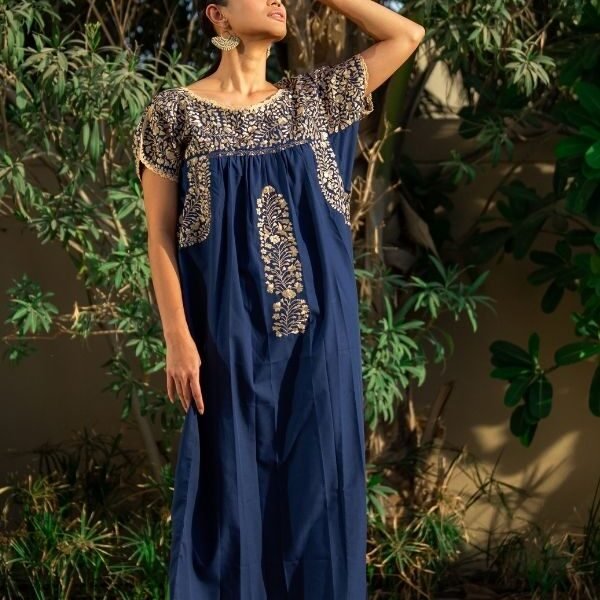 Navy Blue Antonino Dress with Golden Embroidery€94,24
Navy Blue Antonino Dress with Golden Embroidery€94,24- GBP: £79.72
- SAR: 387.60﷼
- USD: 103.32$
- AED: 380.00AED
In Stock
-
 “Floral” Wooden Clutch – Create your own!€311,24
“Floral” Wooden Clutch – Create your own!€311,24- GBP: £263.30
- SAR: 1,280.10﷼
- USD: 341.23$
- AED: 1,255.00AED
In Stock
-
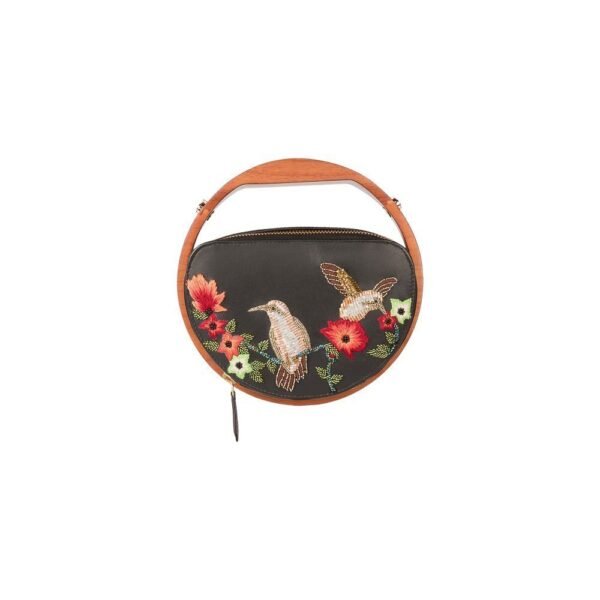 Birds wooden handle bag€415,40
Birds wooden handle bag€415,40- GBP: £351.42
- SAR: 1,708.50﷼
- USD: 455.43$
- AED: 1,675.00AED
In Stock
There is also what we call the Ultra Slow Fashion that is basically made-to-order items. Done to the specific size and requirements of the client in particular. Like in the old good days with the tailors and seamstresses.
Slow Living is the future
Slow fashion is also part of the Slow Living movement. A slow lifestyle means we care to reconnect with what is really important. The Slow Living philosophy encourages a slower approach to aspects of everyday life, not only food but also fashion, money, and cities. When it comes to food, slow-cooked meals with carefully selected ingredients and that traditional taste. Do you remember your grandma’s cooking? No restaurant or fast food can beat the taste and nutrition of those meals.
To understand the pillars of Slow Living, we take the word SLOW as an acronym. There the S means Sustainable, L stands for Local, O for Organic, and W for wholesome or not processed. Slow living could be a solution to avoid the negative consequences of the fast-paced, mindless, materialistic lifestyle. At the end of the day, we all want to enjoy life and be more aware of what we are living in the present.
The 3 Beneficiaries of Slow Fashion
People, profit, and the planet, also called the Tripple Botton Line, are the three P’s that companies should use to evaluate companies’ real value. Normally, profit is the only value investors seem to care about. The 3 P’s want brands to look at the social and environmental aspects equally as they do when it comes to profit. It considers the workers and ensures aspects such as living wage, safe working environment, no discrimination, and many more.
Since companies need to generate profit and revenues, the brands need to have a positive impact on the economy. Slow fashion brands look at creating employment, paying taxes, cost savings, or governance policies. Lastly, when it comes to the planet, companies use natural resources and minimize the environmental footprint. Trying to create a positive impact on the environment, they use natural dyes and do not pollute rivers, fight deforestation, use renewable energy and water, etc.
Do slow fashion items need to be made out of natural materials?
Not necessarily. Their negative impact is less by meeting the real demand than big fast fashion brands churning tons of clothes even if organic. Of course, we love Slow fashion items made of natural and organic materials. They just go so well together!
Some of the best materials are organic cotton, hemp, linen, or bamboo. There are materials coming out of fruit or waste such as Piñatex (pineapple leaves), Vegea (Wine leather), Orange peel (made out of citrus by-products), or Eco Vero (wood pulp). Others are recycled like Econyl (regenerated nylon made out of ocean and landfill waste).
These materials have incredible benefits such as hemp being a carbon-negative raw material or bamboo naturally having UV protection, being hypoallergenic, and incredibly soft.
-
Sale Product on sale
 Portonovi Wine Leather Sandals€55,06 – €127,55
Portonovi Wine Leather Sandals€55,06 – €127,55- GBP: £46.58 – £107.90
- SAR: 226.44﷼ – 524.59﷼
- USD: 60.36$ – 139.84$
- AED: 222.00AED – 514.30AED
In Stock Made to Order
-
Sale Product on sale
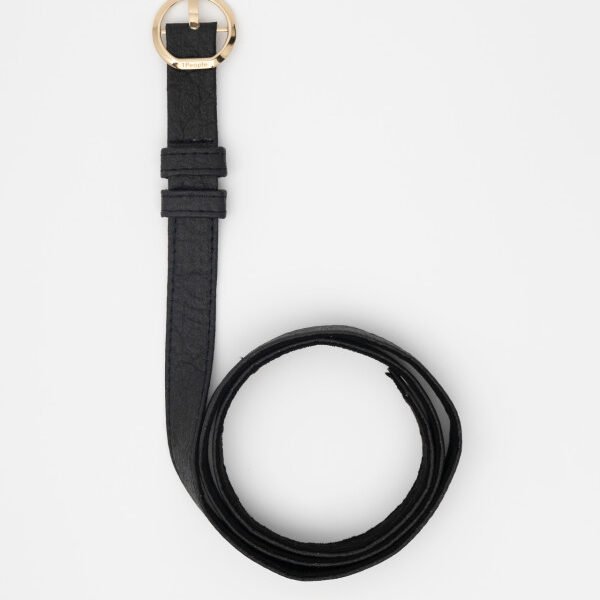 Black Berlin Pinatex Thin Belt
Black Berlin Pinatex Thin Belt€54,14Original price was: €54,14.€45,88Current price is: €45,88.- GBP: £38.81
- SAR: 188.70﷼
- USD: 50.30$
- AED: 185.00AED
Out of Stock
-
Sale Product on sale
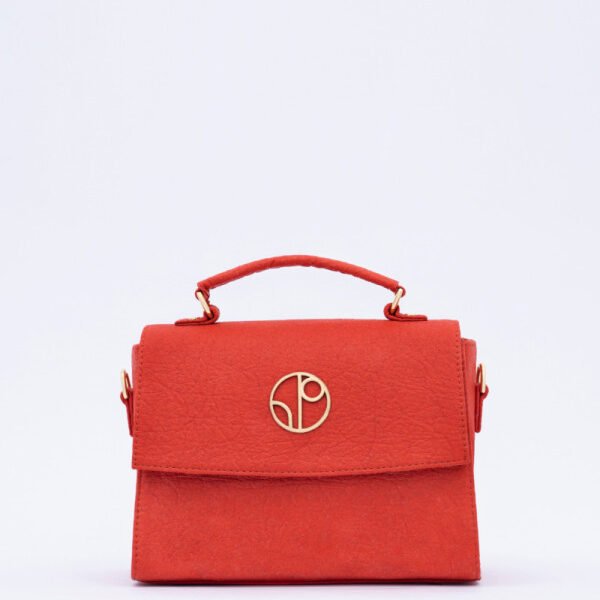 Red London Pinatex Saddle Bag
Red London Pinatex Saddle Bag€164,25Original price was: €164,25.€114,70Current price is: €114,70.- GBP: £97.03
- SAR: 471.75﷼
- USD: 125.75$
- AED: 462.50AED
Out of Stock
-
 Cassettes Orange Peel Rectangular Scarf€44,64
Cassettes Orange Peel Rectangular Scarf€44,64- GBP: £37.76
- SAR: 183.60﷼
- USD: 48.94$
- AED: 180.00AED
In Stock
Can you recycle slow fashion items?
When the product is at the end of its life, we want you to mend it, upcycle it, recycle it, reuse it, or resell it. That is circularity applied to fashion and it’s very much needed at this stage. We need to slow down the rhythm of production and enter into a circular model, where nothing or almost nothing goes to waste. The point is that it should not end in the landfill as it is an unnecessary waste of resources and it is bad for the environment. Recycle them or use the shops and apps where you can donate or resell them.
Slow fashion is easy, convenient, and essentially cheaper since your high-quality product will last years. Quality of materials, close attention to detail from the artisan or designer, and good stitching make that possible.
Where to buy slow fashion?
Slow fashion has incredible environmental benefits and it is also good for your wallet. In Goshopia you can purchase by value and support independent fashion designs and brands that are doing slow fashion. All our products are curated and selected based on our 3 S’s: Slow, Sustainable, and Socially Responsible.
-
 Coffee Bags Geo Jacket- L€198,40
Coffee Bags Geo Jacket- L€198,40- GBP: £167.84
- SAR: 816.00﷼
- USD: 217.52$
- AED: 800.00AED
In Stock Made to Order
-
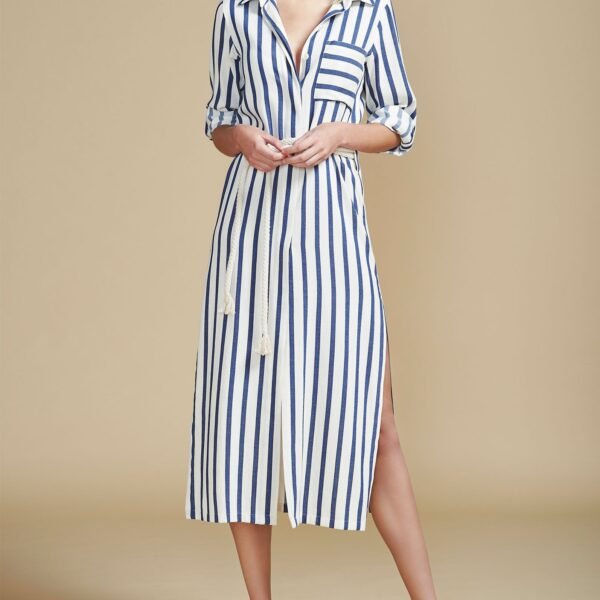 Olivia Dress€163,68
Olivia Dress€163,68- GBP: £138.47
- SAR: 673.20﷼
- USD: 179.45$
- AED: 660.00AED
Out of Stock
Let’s try to be conscious when it comes to our shopping habits and consider the values of the brands we would like to purchase from. Together we can change the fashion industry for the better!
DID YOU LIKE THIS ARTICLE ABOUT SLOW FASHION?
Check out these articles too.










